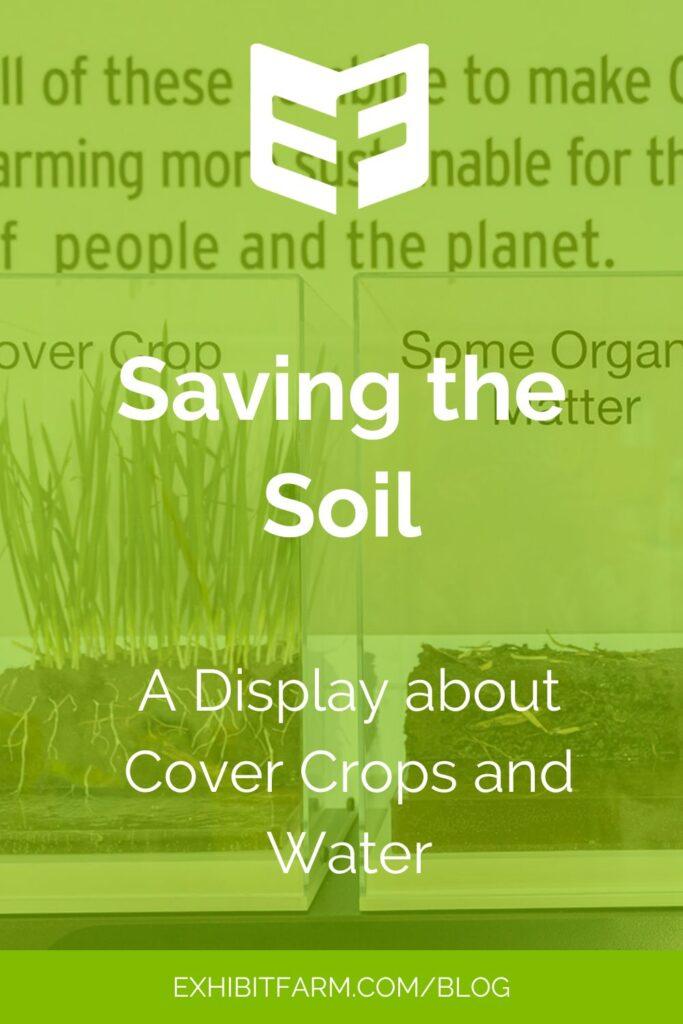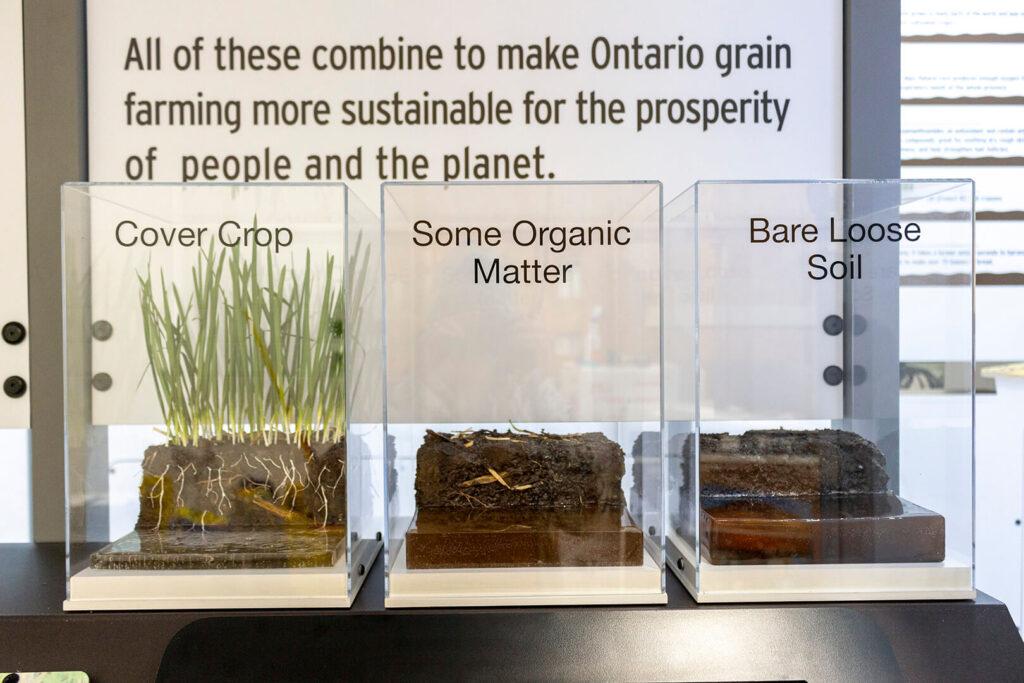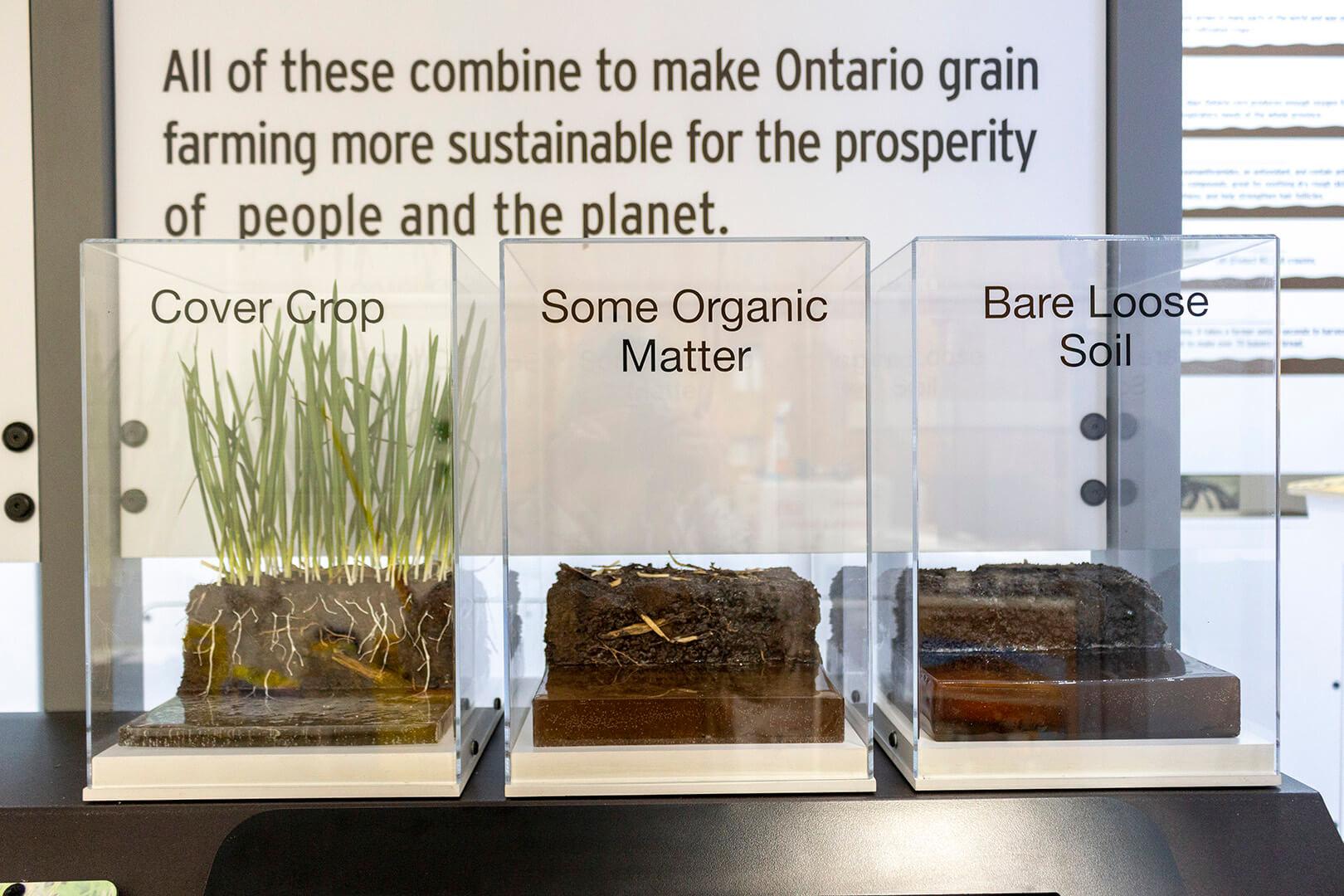
It’s hard to get consumers to care about nitty-gritty farming topics like cover cropping or water quality. But guess what? Cover crops (and their impact on water) provide major benefits not just to farmers, but to consumers too.
One of our clients, Grain Farmers of Ontario, decided to take the message about cover crops and water quality to consumers with some unique displays. The centerpiece is three side-by-side patches of (artificial) dirt, showing the difference that cover crops can make.
Cover Crops and Water Retention
The first water-related benefit cover crops provide is increasing the soil’s capacity to hold water. If your soil holds more water, it won’t dry out as quickly and you won’t have to water it as much. Farmers benefit because they don’t have to pay for irrigating their crops. Consumers benefit because soil that holds onto water reduces the chances of flooding.
The displays we made for Grain Farmers of Ontario show three scenarios for a field. One patch of dirt represents a field with a cover crop. Another doesn’t have a cover crop, but does show some leftover organic matter. The last patch simply represents bare soil, with no significant amounts of organic matter.
To show how much difference organic matter makes for water retention, we represented water runoff with a layer of clear acrylic in front of each patch of “dirt”. The runoff from the soil with a cover crop is about a third of the runoff from the bare soil. But that difference is much more dramatic when you can see it than if you just hear a stat about it.
Cover Crops and Preventing Erosion
Another benefit of increasing soil water retention is that it helps prevent erosion. Cover crops’ roots hold soil in place, for one thing. Plus, when the soil can soak up more water like a sponge, there’s less water to run off in the first place.

Obviously, farmers have a vested interest in keeping as much of their soil in place as possible. Erosion makes their fields less fertile, so it’s harder to raise crops. But again, consumers also benefit.
When soil is washed into waterways, it can become a pollutant. (This is a big problem in the Chesapeake Bay, for instance.) So preventing erosion means more rivers are available for recreation, city water doesn’t have to be treated as much, and so on.
How Cover Crops Can Filter Pollution
Lastly, soil with cover crops can also serve as a filter, removing pollution from the water that does escape. Fertilizer pollution is one of farming’s biggest environmental impacts, especially nitrogen pollution. But cover crops planted in the off-season can absorb fertilizer that the cash crop might not have used, keeping it from polluting groundwater. Cleaner water for consumers, more efficient fertilizer use for farmers — another win-win scenario!
Our models show this difference too. The acrylic “water” in front of the bare soil is a dark muddy brown, representing the increased pollution in the runoff. But the “water” in front of the patch with cover crops is noticably lighter in color, almost clear.
Since the soil water retention displays are part of an exhibit trailer, Grain Farmers of Ontario can bring it to a wide audience of consumers. They don’t have to wait for consumers to come to them; they can go to the consumers. And that means more people can hear about the difference that farming practices make for their lives, even if they’re not farmers.
